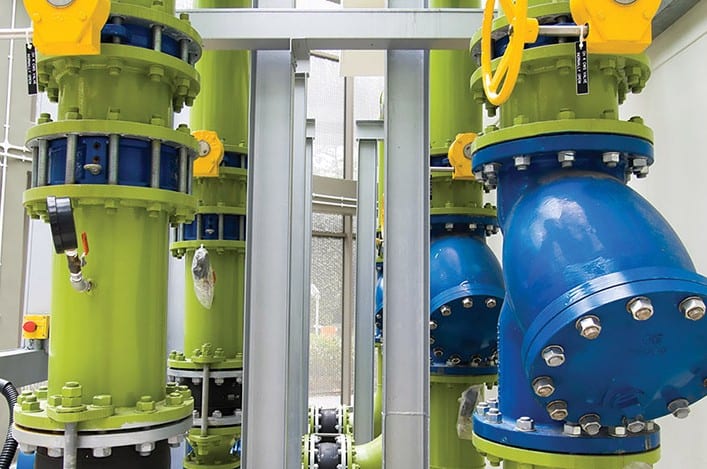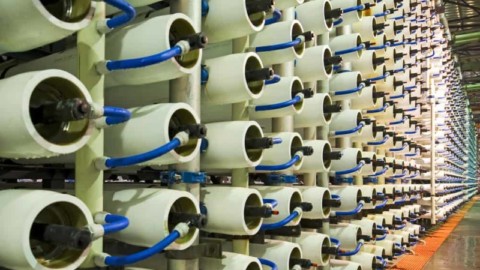Through the Emissions Reduction Fund, the Australian Government will purchase lowest cost abatement from a wide range of sources, providing an incentive to businesses, households and landowners to proactively reduce their emissions. Here, we take a look at the ways in which the pump industry can benefit from this scheme.
 The Emissions Reduction Fund (ERF), established through the Department of Environment and Energy, allows businesses, farmers and community groups to earn carbon credits for reducing their emissions.
The Emissions Reduction Fund (ERF), established through the Department of Environment and Energy, allows businesses, farmers and community groups to earn carbon credits for reducing their emissions.
These carbon credits can be sold to the government through a competitive auction, or to other organisations wishing to offset their emissions.
The average price paid by the government under the Fund to date has been $12.10 per tonne of emissions reductions.
The ERF only credits new and genuine and emissions reductions. To participate, a project must meet the requirements of an approved ERF method. To be eligible to bid into an auction, projects must be able to deliver at least 2,000 tonnes of emissions abatement a year.
Pumps are one of the most common items of energy consuming equipment, and are used across the economy – in manufacturing, mining, agriculture, commercial building and of course water utility applications.
Pumping systems are also difficult to optimise, because pumping efficiency depends on system configuration as well as the characteristics of the pump itself.
Opportunities to participate in the fund are available for energy efficiency proponents in the pump industry through the industrial electricity and fuel efficiency method.
This method covers a broad range of activities that reduce direct fuel combustion emissions and emissions from electricity use.
These include upgrades to pumps, boilers, heating, ventilation and cooling systems, or the installation of variable speed drives.
The method is based on comparing emission levels before and after project activities have been implemented.
Some proponents may also be able to use the commercial buildings method for pump upgrades included in a broader commercial building project.
The Department is also working with industry to explore new opportunities under the ERF. For the pump industry, this includes a possible industrial equipment upgrades method.
Working together
Recognising the role the pump industry has to play in reducing emissions, the Department approached Pump Industry Australia (PIA) as part of seeking advice from key industry and equipment supplier associations, especially those with sound technical knowledge.
Currently, the Department is working with a technical working group of industry experts to explore a potential new method for industrial equipment upgrades.
The method under development is intended to support a wide range of energy efficiency improvements to common types of industrial and similar equipment, including pumps, boilers, and compressed air systems.
It is intended to provide simpler measurement and calculation requirements than the existing industrial electricity and fuel efficiency method.
As the equipment coverage under the proposed industrial equipment upgrades method is quite broad, the technical working group includes representatives from a range of companies, industry associations and bodies representing equipment manufacturers or suppliers.
The Department is engaging with the technical working group on an early draft of the method. Subject to the approval of the independent Emissions Reduction Assurance Committee, the draft method may be released for public consultation by the end of the year.
Considering the whole system
In designing the draft industrial equipment upgrades method, the Department is looking to accommodate improvements to a whole mechanical system, for a range of different types of industrial and related equipment, including pumps.
Abatement is measured as the difference in energy consumption between representative baseline and operating measurement periods.
Adjustments are made for energy intensity where this yields a more conservative result.
The length of baseline and operating measurement periods would typically be one month, with flexibility provided for shorter or longer periods where appropriate, such as where seasonal factors apply.
Most industrial systems have multiple components, and can operate with very different load profiles.
For pumps, an operator could replace the pump with a more efficient model, install a variable speed drive, trim the impeller, install more efficient valves, or implement a range of other activities.
Energy savings for different activities do not always accurately sum, so the method has been designed to simply measure performance over representative periods before and after the upgrade.
This approach allows the draft method to credit the best combination of upgrade activities for each pumping system, maximising potential abatement credits.
The draft method allows the project proponent to assess the efficiency of the system in the way most appropriate for them.
The draft approach also encourages cost-effective solutions, for both upgrades and the approaches used to identify and quantify savings.
Generally, upgrades of existing pumps can yield energy savings in the order of 10-20 per cent, and sometimes more. These savings stem partly from physical changes to pumping system components and partly from improved control.
The amount of abatement delivered under any potential method for the ERF would be subject to the rules in the final method and depend on how project proponents design and implement their projects.
Installation of variable speed drives may be one of the more common activities, given its ability to reduce throttling losses in many applications.
 Participating in the ERF program
Participating in the ERF program
Since the draft industrial equipment upgrades method covers upgrades to a range of different equipment types, it is well suited to manufacturing or mine sites, which can upgrade several different types of equipment as part of the same project.
Of course, water utilities and irrigators would also have large numbers of pumps and could potentially use the draft method.
As the requirements for measurements and calculations are the same, the draft method could accommodate projects involving several types of equipment.
For example, a mine operator might be able to upgrade dewatering pumping systems, compressed air systems and even mine ventilation systems as part of the same project.
Being relatively simple, the draft method is also potentially well-suited to use by aggregators, who could implement pump and other equipment upgrades at several sites.
The amount of abatement from any projects under the potential method would depend on the effectiveness of the chosen solution.
What can we do now?
Energy efficiency is the result of a number of factors, including the suitability of the pump design and selection for a specific task, the characteristics of the piping and distribution system, and other business needs.
Over time, as system loads and piping are modified, a pump can drift away from its best efficiency point. The government’s energy efficiency exchange website discusses energy efficiency opportunities for pumping systems.
Metering can indicate whether a pump is performing to specifications, and help determine whether investments in energy efficient solutions have worked.
For example, metering a pump after installing a variable speed drive can help to identify the appropriate load profile for future purchases in similar applications.
Similarly, flow metering enables deterioration in pump performance over time to be better understood, and can help to identify water leaks. On mine sites, metering can help to identify the pumps that offer the best through-life efficiency when pumping abrasive slurries in real-world conditions.
Longer term, the Australian Government, through the ERF and the National Energy Productivity Plan, continues to work with industry to explore opportunities to reduce energy consumption emissions across a range of sectors.
The Department believes that the PIA could potentially help to integrate energy efficiency into pumping system design and replacement guidelines.
Further information on how to participate in the Emissions Reduction Fund can be found at www.cleanenergyregulator.gov.au. AusIndustry can also provide advice on project development and the project registration process.




















